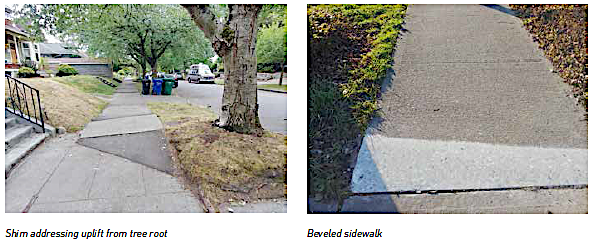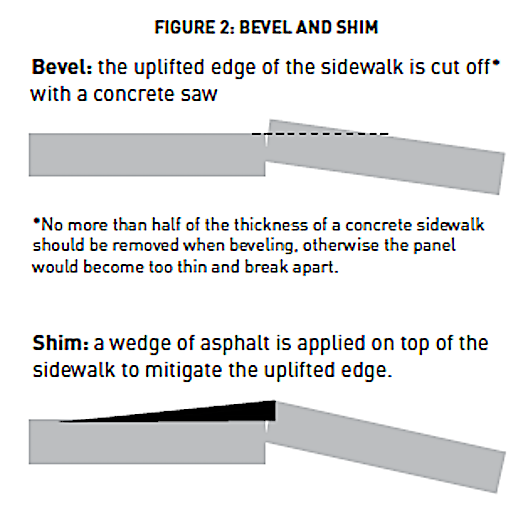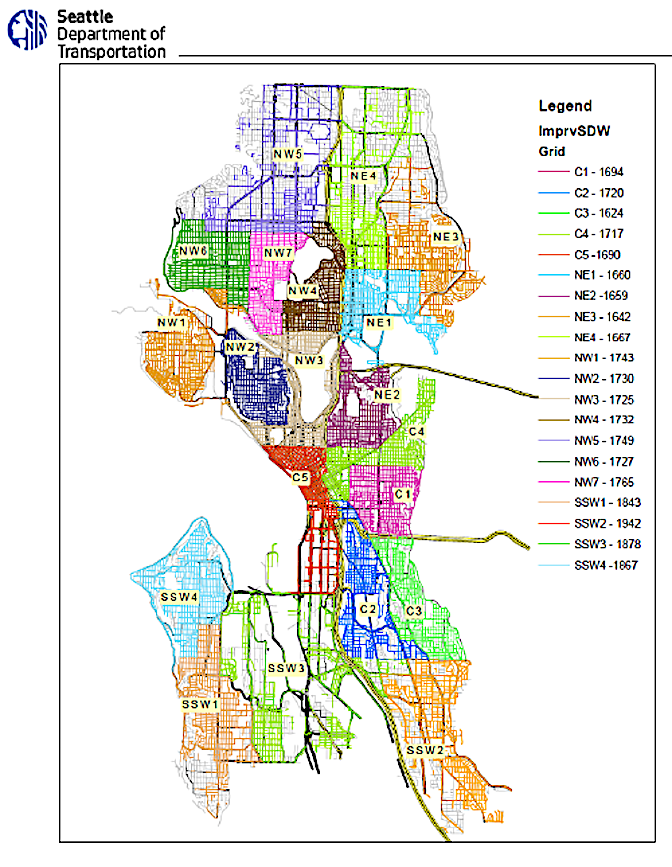Herbold offers sidewalk maintenance report
Mon, 10/05/2020
District 1 City Councilmember Lisa Herbold offered an update on the City of Seattle's sidewalk maintenance efforts:
Last year the Council adopted Resolution 31908 I sponsored, requesting SDOT develop policy options for maintenance of sidewalks. The committee presentation before the vote noted how hazardous uneven sidewalks can be for wheelchair users, and for vision impaired persons.
SDOT completed the report earlier this year: Policy Recommendations for Sidewalk Repair in Seattle, developed with the Evans School at the UW.
Here's a memo from SDOT summarizing the findings and recommendations.
The report notes Seattle has over 2,300 miles of sidewalks, with a total replacement value of $5.6 billion (in 2015 dollars), and estimates the current repair and replacement obstruction removal need as between $500 million and $1.3 billion. Funding varies from year to year for sidewalk maintenance, in the range of $1.5 to $5 million per year.
With limited funding, SDOT has prioritized installing shims and bevels to address trip hazards. A bevel is when the uplifted edge of a sidewalk is cut off with a concreate saw; a shim is when a wedge of asphalt is applied to the top of the sidewalk to mitigate the uplifted edge.

The report notes that sidewalk repair in Seattle is generally held to be the responsibility of property owners.
Key findings include:
- Sidewalk construction in Seattle has historically been privately financed through Local Improvement Districts or through redevelopment of adjacent parcels. The City has never had adequate funding or a workable enforcement mechanism to manage ongoing sidewalk repair after initial sidewalk construction.
- Property owners are often unaware of their sidewalk maintenance responsibility and trip/fall liability exposure. Even when aware, the sidewalk repair cost usually exceeds the incentive for private property owners to make the necessary repairs. In addition, current permitting processes and external contractor procurement can be complex and difficult to navigate for a typical property owner.
- Cities in North America typically take one of two primary approaches to sidewalk maintenance:
- City-managed repairs with a dedicated funding source (e.g. Boston; Vancouver, BC)
- Property owner repair responsibility with City-led enforcement (e.g. Seattle, Denver)
- The COVID-19 pandemic has demonstrated how critical safe sidewalks are for everyone to be able to walk and roll around Seattle to access basic services and maintain physical and mental health.
Key recommendations are:
- Implement a citywide 5-year sidewalk shim/bevel plan as a first step to mitigate existing sidewalk uplifts and other deficiencies that can create accessibility barriers or trip/fall risks. This would require an additional $3 – $4 million per year, on top of the current annual sidewalk shim/bevel budget (which is a subset of the aforementioned SDOT sidewalk maintenance budget).
- Increase property owner awareness and education about sidewalk responsibilities, through citywide mailers, a social media campaign, and sidewalk contractor resources for property owners
- Simplify the sidewalk repair permitting process, through online permitting portal implementation and more upfront repair guidance at the time a warning notice is issued
- Institute an income-based cost-sharing program for lower-income property owners
- Implement clearer enforcement methods, including amending existing RCW and SMC sections that require Council approval to enforce sidewalk repair liens on non-compliant property owners
- Seek increased and stable funding for long-term maintenance of Seattle’s existing and growing sidewalk network
A map of work that could be done for the first recommendation if funded is below:



